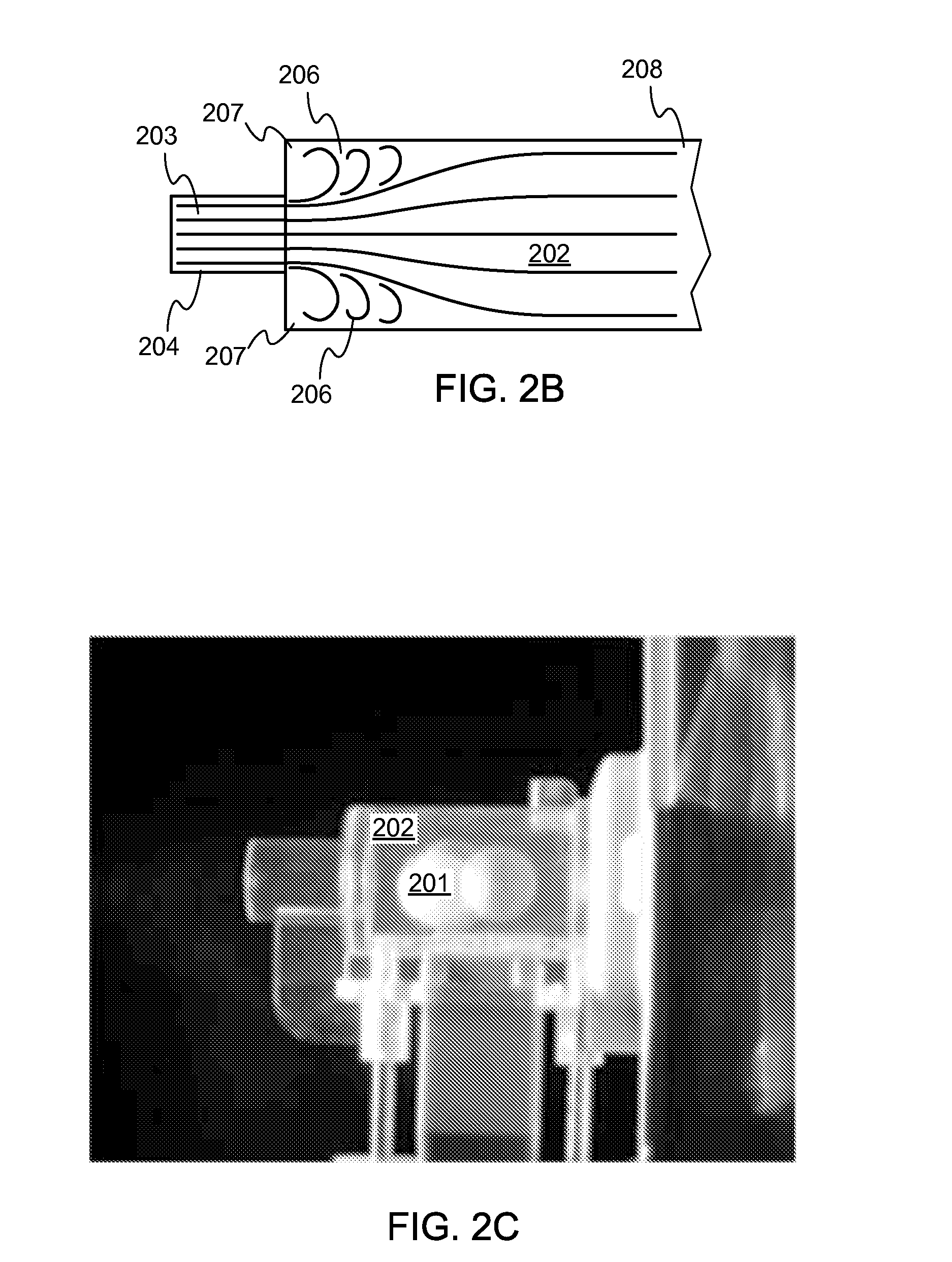Dry powder inhaler
a technology of dry powder and inhaler, which is applied in the direction of packaging, other medical devices, coatings, etc., to achieve the effect of low flow rate and high performan
- Summary
- Abstract
- Description
- Claims
- Application Information
AI Technical Summary
Benefits of technology
Problems solved by technology
Method used
Image
Examples
performance examples
[0131]Tests have shown that devices according to embodiments may still effectively deliver medicament, even at low air flow rates, as compared with previous devices. Table 4 below compares the respirable fraction of particles produced by a DPI embodying the invention with that produced by a conventional inhaler using lactose carrier particles. Two different medicaments commonly prescribed for pulmonary disease were tested, the corticosteroid budesonide and the β-agonist salbutamol, at three different flow rates.
TABLE 4Comparison of respirable fraction produced by embodiments of thepresent invention with prior lactose-based deliveryFine ParticleFlowFraction (loaded)RateLactosePresentDrug(L m−1)StandardInventionBudesonide4528%58%3026%53%155%24%Salbutamol4547%67%3046%68%158%45%
[0132]The relative insensitivity to flow rate may be especially important in the treatment of patients having compromised breathing ability, for example as a result of chronic obstructive pulmonary disease (COPD)...
PUM
 Login to View More
Login to View More Abstract
Description
Claims
Application Information
 Login to View More
Login to View More - R&D
- Intellectual Property
- Life Sciences
- Materials
- Tech Scout
- Unparalleled Data Quality
- Higher Quality Content
- 60% Fewer Hallucinations
Browse by: Latest US Patents, China's latest patents, Technical Efficacy Thesaurus, Application Domain, Technology Topic, Popular Technical Reports.
© 2025 PatSnap. All rights reserved.Legal|Privacy policy|Modern Slavery Act Transparency Statement|Sitemap|About US| Contact US: help@patsnap.com



